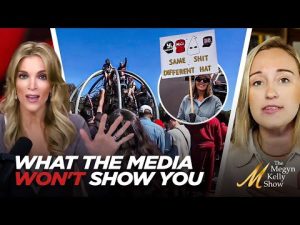In the bustling streets of New York City, discussions and debates are heating up as the mayoral race takes a dramatic turn. Among the candidates, Zoran Mamdani, a self-declared democratic socialist, is making waves and causing quite the stir with his controversial views that have led some critics, including former President Trump, to label him a communist. With the Big Apple being at the forefront of politics and culture, the implications of this election stretch far beyond the city limits, raising questions about the future of capitalism and socialism in America.
Recently, an independent journalist named Nate Friedman decided to dive into the world of radical ideologies by attending a meeting organized by the Revolutionary Communist Party. The event attracted like-minded individuals who spoke passionately about topics such as abolishing billionaires and taking over large corporations like Amazon under a worker’s government. This talk of revolution, while sounding dramatic, drew Friedman into a fascinating world where the revolutionary fervor met the streets of America.
As Friedman engaged with the attendees, he encountered a mix of excitement and naiveté about socialism. A notable moment included discussions about whether communism had ever truly been put into practice. Some attendees asserted that historical attempts were not “real communism,” prompting smiles and raised eyebrows from savvy observers who know that history tells a different story. It’s as if they believe that a sprinkle of fairy dust could make it work if given another chance. It’s easy to see why folks might think that these discussions about policies could be right out of a comic book — they seem almost too wild to be real!
Even within the protests, there were fringe groups taking stands against capitalism. Named “Take No Kings,” these demonstrators used the space outside other protests to recruit followers to their cause. The anti-capitalist agenda seems to intertwine with various social justice movements, painting a picture of a potentially fragmented political landscape. This combination can make for some complex conversations, as people grapple with their beliefs amidst a wide spectrum of ideologies — all while trying to figure out who the real “kings” are in this saga of politics.
Furthermore, the mayoral race is heating up as Curtis Sliwa, another candidate, speaks out against Mamdani. Sliwa is determined to rally voters around a message that counters the radical left’s hold on the city. He and others want to ensure that voters are aware of potential consequences if their votes split, which could inadvertently pave the way for Mamdani’s victory. The dynamics of this race are tense, reminiscent of the wild stock market fluctuations: one moment there’s a surge in support for one candidate, the next a plunge that leaves everyone guessing.
So as the fight for New York City’s future unfolds, it becomes clearer that these discussions offer mere glimpses into a broader ideological battle. Whether through fiery protests or passionate debates at the ballot box, the citizens of New York stand at a crossroads, grappling with a spectrum of ideas that question the core of American capitalism and challenge the status quo. Regardless of one’s stance on these issues, the excitement and intensity are undeniable—New York City is ready for a showdown that might just reshape its political landscape for years to come!







